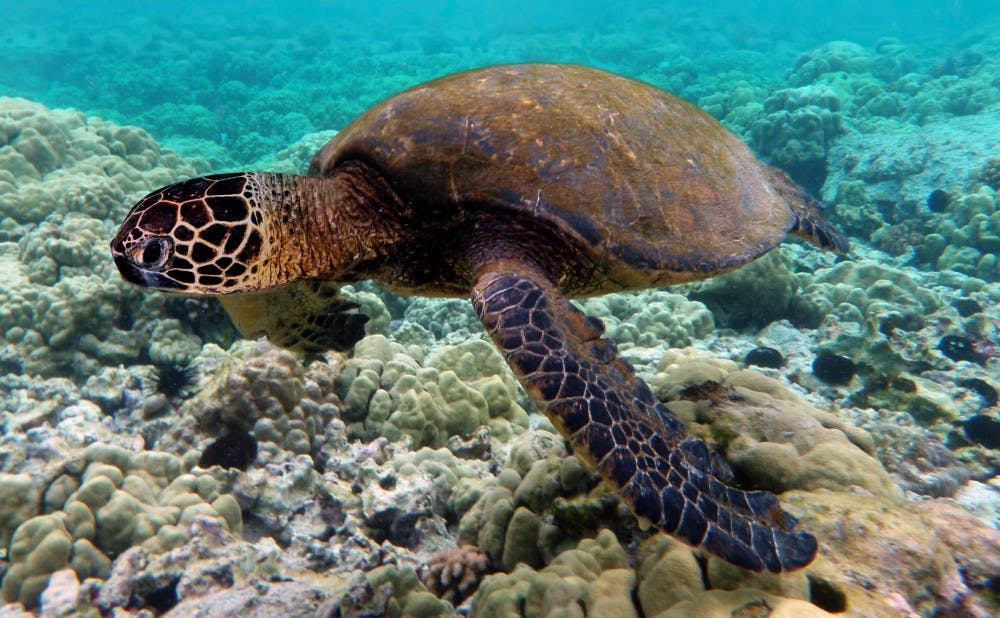Ever seen thousands of sea turtles in Costa Rica lay their eggs during a mass-nesting event? Probably not—it’s difficult even for scientists to observe. But using drone technology, a study co-led by a Duke researcher gained greater insights into the phenomenon.
A team from Duke and the University of North Carolina at Chapel Hill used a fixed-wing drone to perform aerial surveys of olive ridley sea turtles at the Ostional National Wildlife Refuge on Costa Rica’s Pacific coast, one of the world’s most important nesting beaches. Data from four days in August 2015 showed that turtle densities at the refuge may be as much as 2,086 animals per square kilometer during the nesting season, a higher number than the scientists had anticipated. The study was published Dec. 18 in the journal Scientific Reports.
“This study was meant to present the methods for using drones for collecting population assessments,” said Seth Sykora-Bodie, a third-year Ph.D. student at the Nicholas School of the Environment, who co-led the study. “Drones had never been used for this type of analysis.”
Some prior research had employed drones to look at sea turtle behavior but not densities, explained Vanessa Bézy, a fourth-year Ph.D. candidate at the University of North Carolina at Chapel Hill and co-author of the study. This mostly involved hovering over mating pairs and observing courtship behavior.
In the study, the drone used a high-resolution digital camera with near-infrared vision, which flew 90 meters above the ocean and allowed an expanded field of view and greater image clarity. The footage revealed turtles below the water’s surface in a way that purely visual sightings from boats may not have detected.
Previously, researchers have collected data on turtle abundance using mark-recapture studies, in-water surveys and counts of turtles on nesting beaches. However, these techniques are often costly, time-consuming and lack the accuracy of the drone method used in this study.
Bézy noted that airplanes have often been used for sea turtle observation, but that this is not an ideal technique.
“When you’re in the plane, you’re not really able to record,” she said. “The plane might not be at optimal altitude, and it’s limited in how and when you can fly.”
Drones are also much safer than airplanes, Sykora-Bodie said.
“Surprisingly, one of the leading causes of death for scientists is airplane-related crashes,” he said. “That’s something that’s always concerned people.”
During the study, the team flew the drone over three kilometers of water near the shore twice each day—once in the morning and once in the evening—during four consecutive days of a mass-nesting event. They counted 684 confirmed turtle sightings and 409 probable sightings.
This translated into a low-end daily estimate of 1,299 turtles per square kilometer in the surveyed area and a high-end estimate of 2,086 turtles.
“We all knew there were a lot of turtles, but the numbers here are just incredible,” Bézy said.
Sykora-Bodie noted that analyzing the data in the drone footage was a challenge, involving counting the actual number of turtles in each image. The researchers are working with a software company in California to develop an algorithm that can automatically detect turtles in images, he said.
Next up, the scientists plan to study whether there are certain areas where the turtles tend to aggregate.
“The question is, how do you expand this study and conduct it in a systematic way?” Sykora-Bodie said.
Drone technology could be employed to detect populations of other species—like manta rays—in the water, Bézy noted. It could also be a way to measure biodiversity in habitats and ensure that regulations are being followed in the protected areas.
The ultimate purpose of the study was to examine the status of sea turtle species, which are considered vulnerable or threatened around the world, Sykora-Bodie noted.
“We’re trying to understand what the status of the population is and what the trend is,” he said. “Is the population growing or shrinking?”
Bézy explained that studying sea turtles is important because they are a good indicator of the health of oceans. Without them, food chains and delicate marine ecosystems could fall apart.
And then there’s the cuteness factor—leading more people to care about ocean conservation.
“Sea turtles are a great organisms because they are charismatic, and they can get the public attention a little easier,” Bézy said.
Get The Chronicle straight to your inbox
Signup for our weekly newsletter. Cancel at any time.

